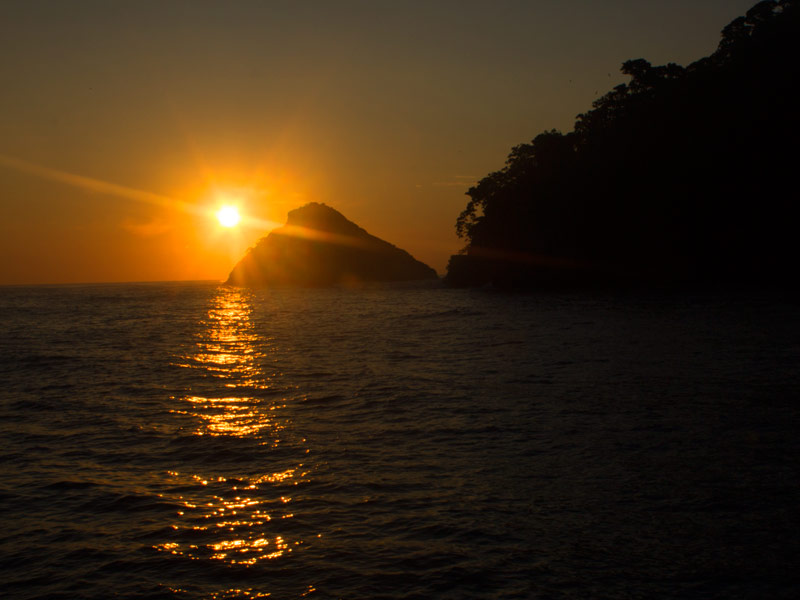Follow our Feb. Cocos Island Expedition in this series of blog posts. The expedition set out to track sea turtles and sharks in order to create a protected science-based swimway that will safeguard endangered marine wildlife during their migrations in the Eastern Tropical Pacific. Below is the Day 1 report.
Wed. Feb. 11, 2015
I’m en route to Cocos Island, Costa Rica with Turtle Island Restoration Network. Our goal is to try and figure out where endangered sea turtles and sharks that visit the Island swim, and then try and create the world’s first international swimway to protect these underwater superhighways used by these animals during their migrations.

Todd Steiner, a biologist and founder of Turtle Island Restoration Network, and Randall Arauz the Director of our Central American Office and I met up with the top-notch crew of the Undersea Hunter in San Jose, and picked up the rest of our citizen science divers at various locations on the bus ride down to Puntarenas. Our group is comprised of divers from around the world (India, Lebanon, France, Italy, Canada etc.) and everyone is excited to get to know each other.
Once onboard Rudi our bus driver keeps us entrained by sharing his knowledge of the landscape. He tells us about the ‘tourist’ tree – a tree that has red peeling bark that looks like a sunburned tourist.
Todd and Randall have been coming to Cocos for years and each have hundreds of scientific dives logged in efforts to better understand sea turtles and sharks and track their migration routes. This trip will be an opportunity to gather more data about these incredible animals, and for me an exciting experience to see science in action.
Cocos Island sits some 350 miles off the mainland of Costa Rica and provides a refuge to a wide array of migrating marine wildlife from endangered green sea turtles to endangered hammerhead sharks and even pregnant whale sharks. The Island seems to me to be something out of a dream – a lush, tropical paradise, surrounded by megafauna rich ocean as far as the eye can see.
I feel incredibly lucky to be on this scientific ocean adventure to help protect this area, but I am reminded of the challenges we face trying to conserve it by the sight of a row of longline vessels sitting in the same port as us.
As it is low tide, we depart in a small boat loaded with our luggage and scientific gear and meet the Argo – our mothership – farther out at sea. The Argo is a truly impressive vessel boasting two skiffs and it’s own submarine! I hop on board and away we go into the sunset.
Signing off from the open ocean,
Joanna Nasar





